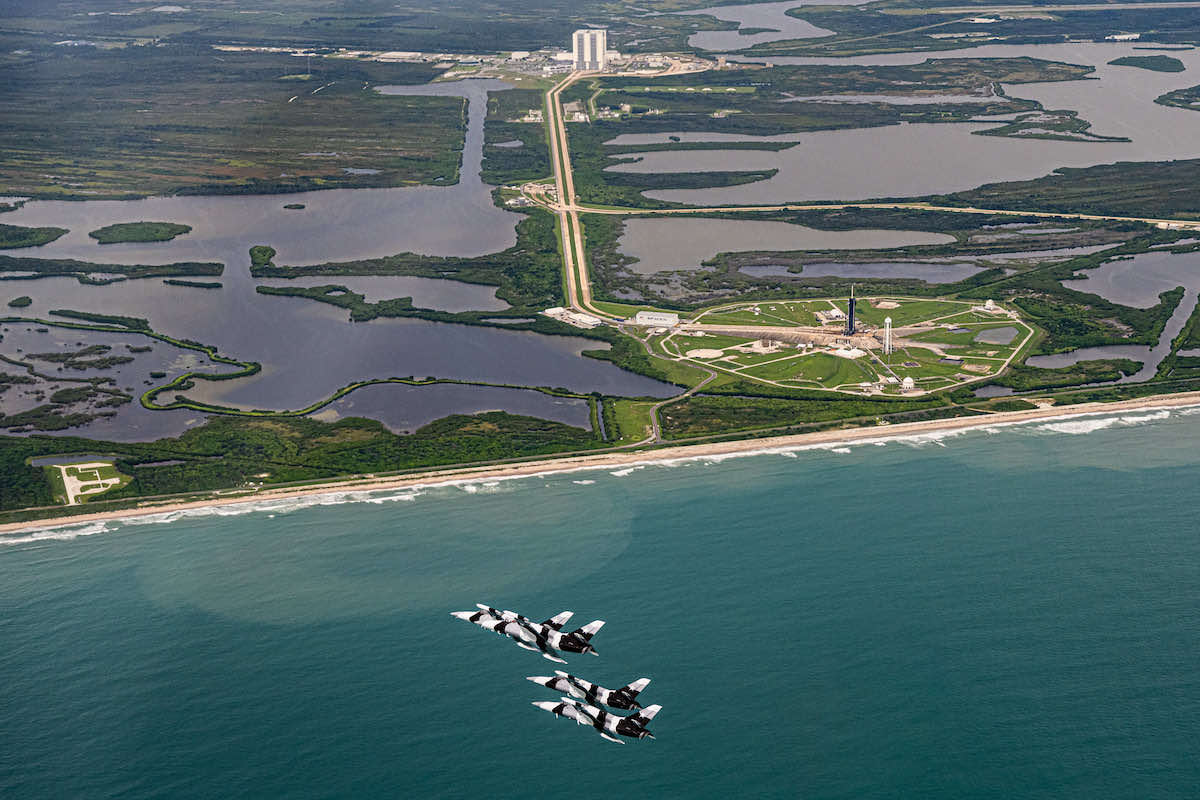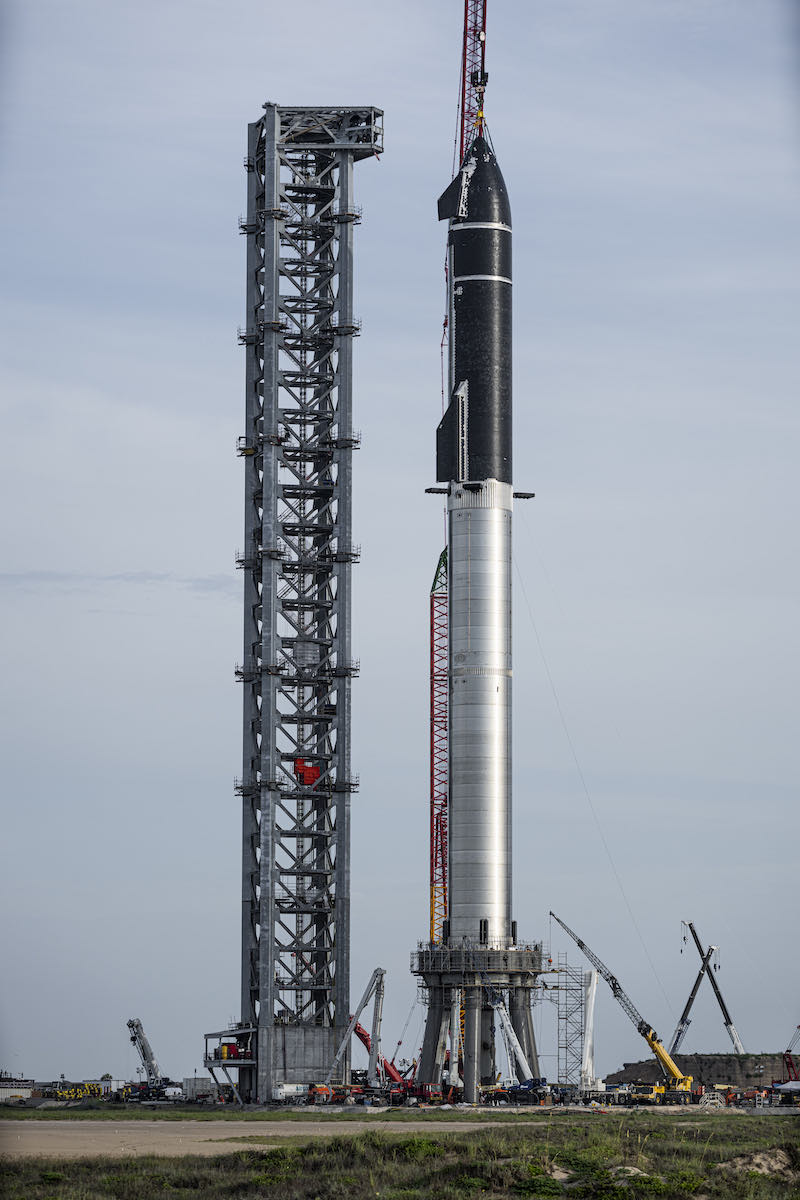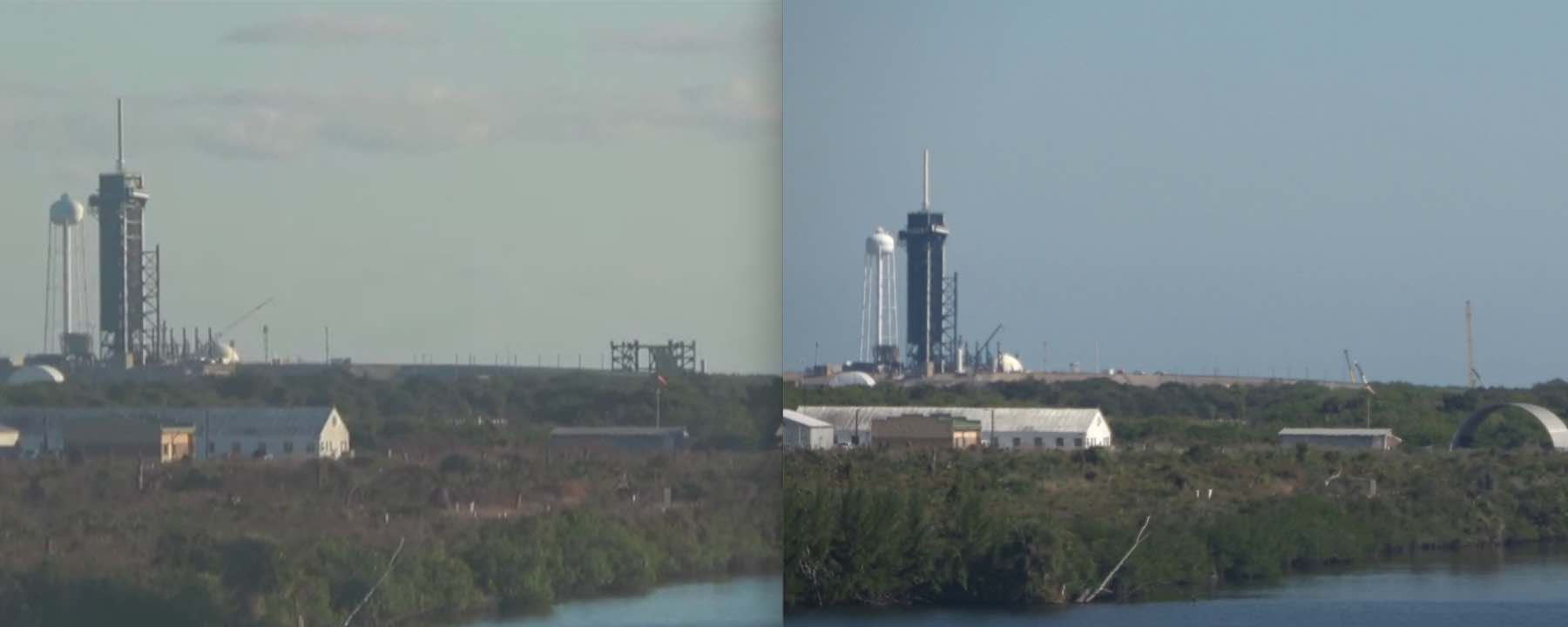Space News & Blog Articles
SpaceX resumes work on Starship launch pad at Kennedy Space Center
 Training jets fly over pad 39A at NASA’s Kennedy Space Center earlier this year ahead of the all-civilian Inspiration4 mission. Credit: Inspiration4 / John Kraus
Training jets fly over pad 39A at NASA’s Kennedy Space Center earlier this year ahead of the all-civilian Inspiration4 mission. Credit: Inspiration4 / John Kraus
Elon Musk, SpaceX’s founder and chief executive, says crews have started construction of the first Starship orbital launch pad in Florida inside the gates of historic launch complex 39A at NASA’s Kennedy Space Center.
“Construction of Starship orbital launch pad at the Cape has begun,” Musk tweeted Friday.
The Starship launch site will be located just southeast of the launch mount location for SpaceX’s Falcon 9 and Falcon Heavy rockets. SpaceX started construction of a suborbital launch pad for Starship test flights at pad 39A in 2019, but halted work there to focus on development of Starship infrastructure at the Starbase facility in South Texas.
The Starbase site, located on the Texas Gulf Coast east of Brownsville, is home to SpaceX’s Starship factory and has hosted atmospheric test flights of Starship prototypes. SpaceX plans to launch the first orbital Starship test mission next year on the first flight to combine the vehicle’s huge Super Heavy booster with the Starship upper stage.
The fully reusable combined vehicle, also called Starship, will be capable of lifting more than 100 metric tons of cargo into low Earth orbit. Powered by more than 30 Raptor engines, the rocket will stand nearly 400 feet (120 meters) tall and generate more thrust than NASA’s Saturn 5 moon rocket from the Apollo program, which also departed Earth from pad 39A.
“39A is hallowed spaceflight ground — no place more deserving of a Starship launch pad!” Musk tweeted.
SpaceX’s first Starship orbital launch pad is nearing completion at the Starbase site in South Texas. Musk said the orbital launch pad at Kennedy Space Center “will have similar, but improved, ground systems and tower to Starbase.”
SpaceX is also outfitting two decommissioned offshore oil drilling platforms to serve as ocean-going launch and landing bases for Starship missions.
Musk did not provide a schedule for when the Starship launch facility might be ready at Kennedy Space Center, or where SpaceX will build the rockets that launch from Florida. SpaceX has rapidly expanded its Starship production infrastructure in South Texas over the last few years, and the company originally planned to also build Starship prototypes at a location in Cocoa, near Kennedy Space Center.
Work at the Cocoa development site ceased when SpaceX decided to focus on Starship development in Texas. At about the same time, SpaceX stopped construction of a suborbital launch mount at pad 39A.
 Crews at SpaceX’s Starbase test site in South Texas stacked the company’s first full-scale Starship launch vehicle in August. Credit: SpaceX
Crews at SpaceX’s Starbase test site in South Texas stacked the company’s first full-scale Starship launch vehicle in August. Credit: SpaceX
In the last few weeks, crews have disassembled the suborbital launch mount at pad 39A, clearing the area for more extensive construction of the orbital launch pad. The construction is expected to proceed in parallel with Falcon 9 and Falcon Heavy launch operations at pad 39A.
The seaside launch complex, which SpaceX leased from NASA in 2014, is the only operational U.S. launch pad for astronaut missions to orbit. It’s also the only launch pad currently outfitted to launch SpaceX’s Falcon Heavy rocket, created by combining three Falcon 9 rocket cores to boost heavier payloads into space.
The U.S. military and NASA rely on the Falcon Heavy to launch national security payloads and interplanetary science probes.
Last month, the Federal Aviation Administration said it expects to complete an environmental assessment of SpaceX’s operations at the Starbase site, located near Boca Chica Beach just north of the U.S.-Mexico border. The review is a prerequisite for the FAA to issue a commercial launch license for the first Starship orbital test flight.
The FAA issued a draft environmental report in September after consultation with several federal and state agencies, then held two hearings in October to obtain public comments.
The draft report marks a re-evaluation of the FAA’s original environmental impact statement before SpaceX started construction of the Boca Chica site in 2014. At that time, SpaceX planned to launch Falcon 9 and Falcon Heavy rockets from South Texas, but the scope of the project has since changed to focus on development of the much larger Starship and Super Heavy.
Assuming the FAA concludes that Starship operations will not have a significant environmental impact, or that any effects can be mitigated, regulators will give the green light for the orbital test flight. Otherwise, the FAA will begin work on a new environmental impact statement, which would likely take months, or perhaps even years.
 A view of the former Starship launch mount at 39A in December 2020 (left), and a view of pad 39A in December 2021 (right) with the suborbital pad removed from the site. Credit: Spaceflight Now
A view of the former Starship launch mount at 39A in December 2020 (left), and a view of pad 39A in December 2021 (right) with the suborbital pad removed from the site. Credit: Spaceflight Now
The Starship architecture consists of a Super Heavy booster and the Starship vehicle, which serves initially as an upper stage during a launch into Earth orbit, then as a space transporter, and finally as an Earth return vehicle for payloads and people.
SpaceX eventually aims to develop an in-space refueling capability to extend Starship’s heavy-duty cargo carrying range into the solar system.
NASA is the first major customer for SpaceX’s Starship program. The space agency announced a $2.9 billion contract in April for SpaceX to develop a human-rated moon lander derived from the Starship for Artemis lunar missions.
Blue Origin, a rival space company founded by billionaire Jeff Bezos, also bid on the lunar lander contract. Blue Origin sued NASA protesting the award to SpaceX, but a federal judge dismissed the lawsuit last month.
Under NASA’s Artemis program architecture, astronauts will leave Earth on top of the agency’s government-owned Space Launch System heavy-lift rocket, a powerful launcher almost as big as SpaceX’s Starship.
The astronauts will ride to the moon inside an Orion crew capsule, then rendezvous with the Starship human-rated lander in orbit around the moon. Crew members will transfer into the Starship for descent to the lunar surface, then ride the rocket back into space to reconnect with the Orion spacecraft for return to Earth.
The Starship launch complex at pad 39A could be used in the Artemis lunar campaign. Getting the Starship lander to the moon will require multiple orbital refueling missions using a tanker variant of the Starship vehicle.
The tankers will dock with the moon-bound Starship to transfer methane and liquid oxygen for the lunar lander’s Raptor engines.
The rapid-fire launch campaign for an Artemis lunar landing mission will likely require SpaceX to use multiple launch pads, and pad 39A could be in the mix. SpaceX is also considering other locations for a second Starship launch pad on Florida’s Space Coast.
NASA’s SLS moon rocket will launch from pad 39B, another Apollo-era launch facility located less than 1.7 miles (2.7 kilometers) north of pad 39A.
This email address is being protected from spambots. You need JavaScript enabled to view it. the author.
Follow Stephen Clark on Twitter: @StephenClark1.

